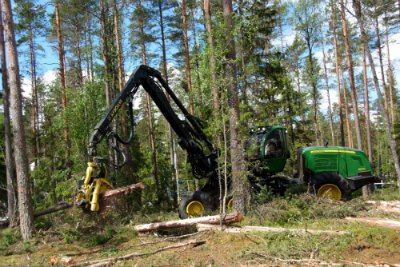
Features
Harvesting
Logging Profiles
Survey Snippet #7 – Operating cost trends
Aug. 2, 2016 - One thing stands out above all else when Canada’s logging contractors talk about costs in 2016 – the cost of gear is way up and climbing. The culprit behind the rising cost of equipment is almost as clear – the strength of the US dollar.
In our 2016 Canadian Contractor Survey, loggers were asked how much their main cost centres changed in 2015. As the results show below, the cost of machinery and parts/service have increased significantly, with almost two-thirds of respondents reporting that these costs have increased significantly. Labour was a distant third, with only a quarter reporting a significant increase in this area.

Also not surprisingly, the larger the contractor, the more likely they are to feel that machinery and parts costs had increased significantly – these contractors also tend to own and buy much more equipment, and plan to buy much more in the near future. Of the largest contractors (>$5M), 78 per cent felt that equipment costs had increased significantly, while only 45 per cent of the smallest contractors (<$1M) felt the same way.
And while the larger contractors were much better able to maintain or reduce fuel, insurance and finance costs than smaller contractors, the largest contractors were more likely to feel labour costs had increased significantly (38%) than the smaller logging companies (14%).
Not all costs climbed. A majority of contractors reported that their fuel costs were down either significantly (33%) or slightly (21%), while finance costs were either the same (51%) or lower (19%) for most loggers.
Next week Survey Snippet #8 looks at hours worked per week by company size and region.
Missed the last Survey Snippet #6 on operator benefits? See it here.
Find more news for the CFI 2016 Contractor Survey on www.woodbusiness.ca and in our enews in the coming months, with a final digital report in late August and a summary in the Sept/Oct print issue. Be sure to subscribe to the enews to get every item.
__________________________________________________________________________
The survey was conducted in April 2016 for Canadian Forest Industries by independent research firm Bramm & Associates, generating over 230 replies to a detailed list of questions. Respondents were distributed according to the geographic breakdown of the forest industry, with 50 per cent in Western Canada, 25 percent in Quebec, and the rest found in Ontario, Atlantic Canada, and central Canada. Within BC responses were almost evenly split between the BC coast and Interior. Many thanks to our sponsors for making the research possible – Hultdins, Stihl, Tigercat and Ponsse. Also made possible with support from the Ontario Media Development Corporation (OMDC).
August 2, 2016 By Scott Jamieson

Print this page